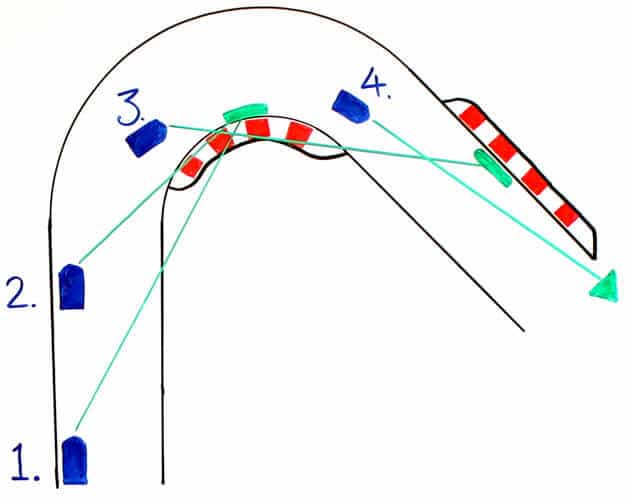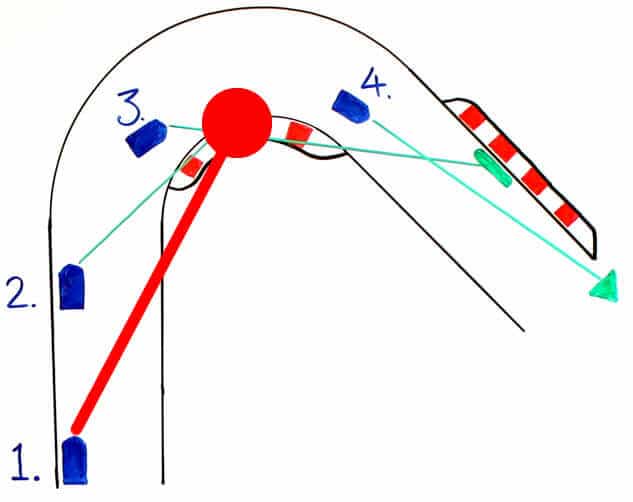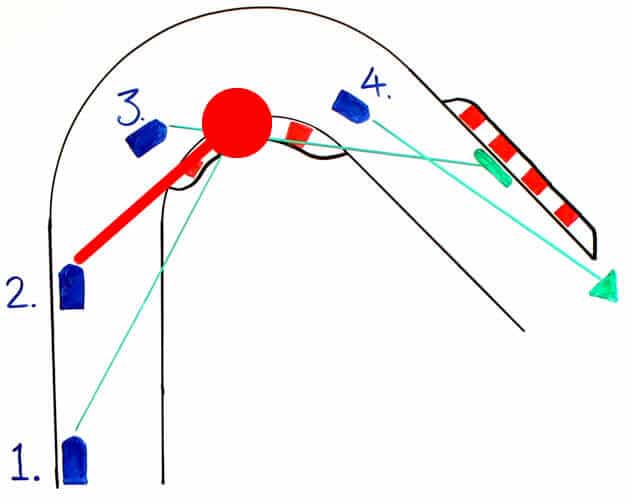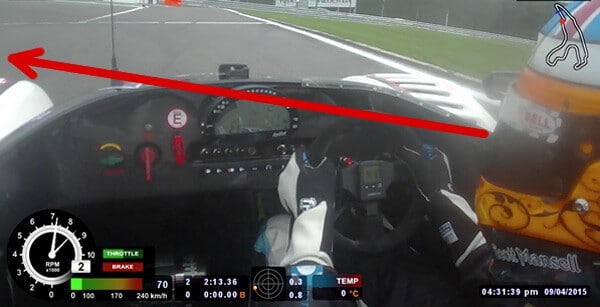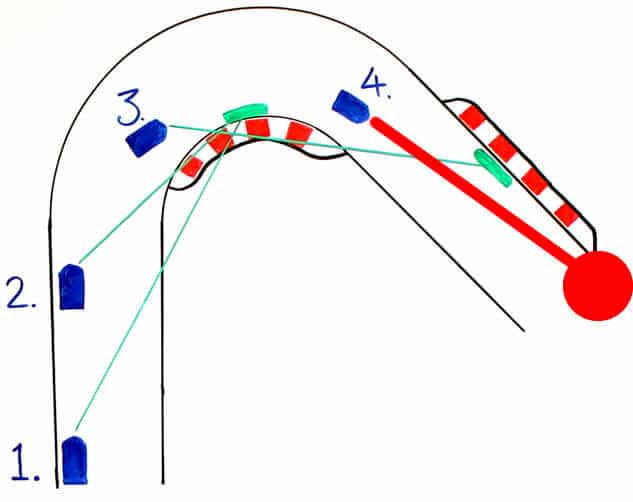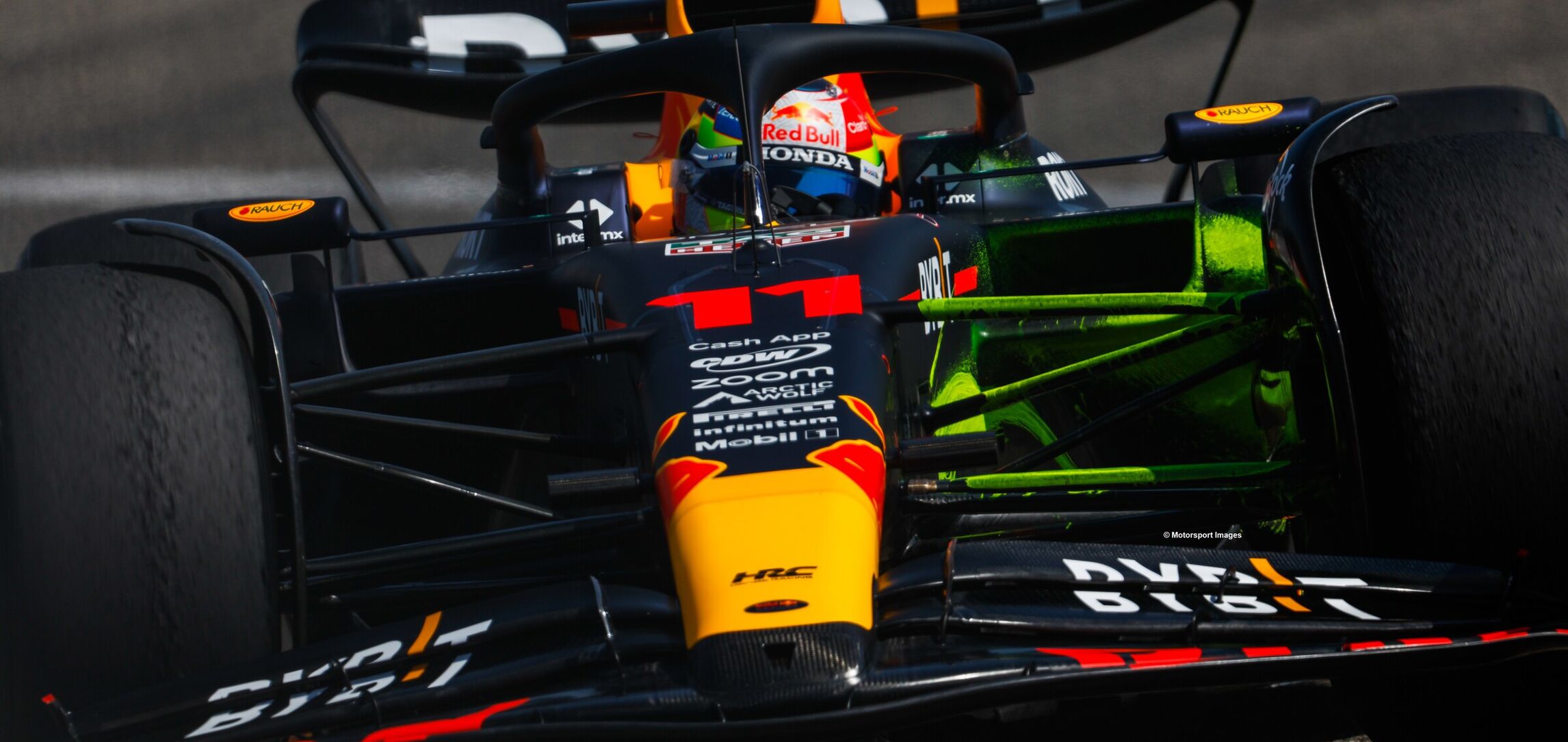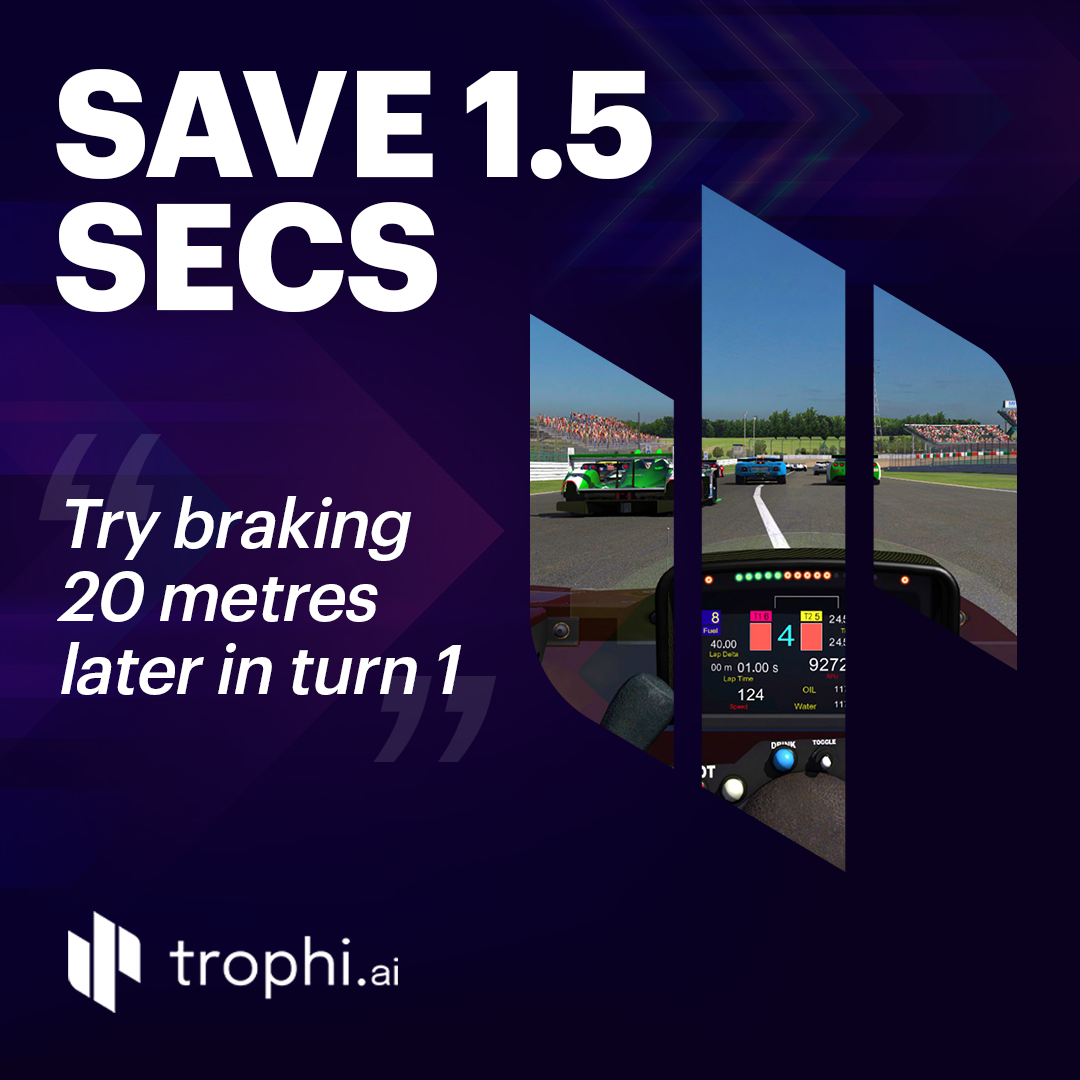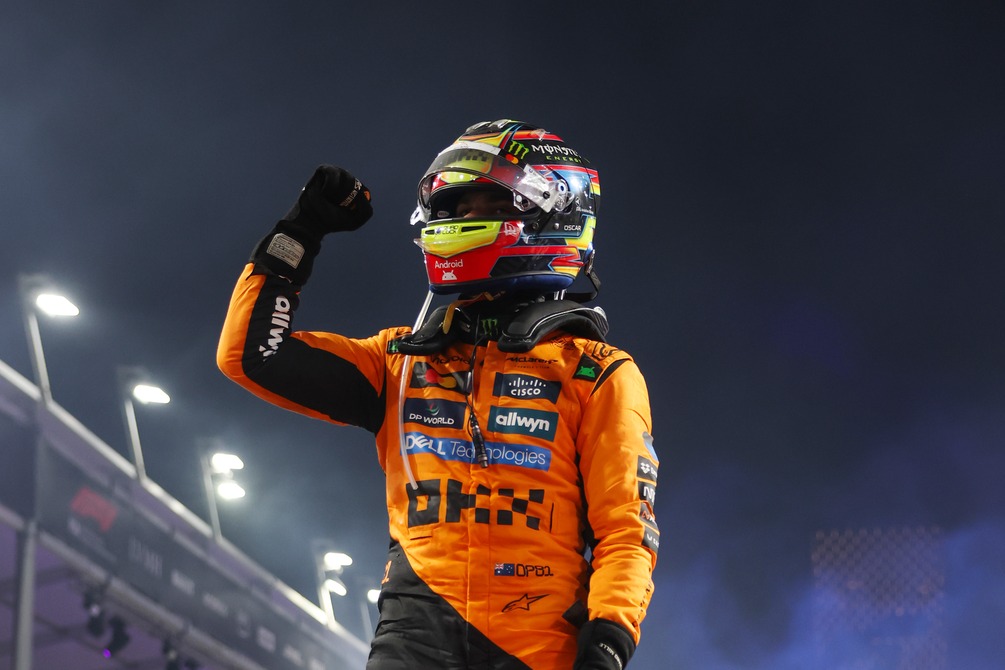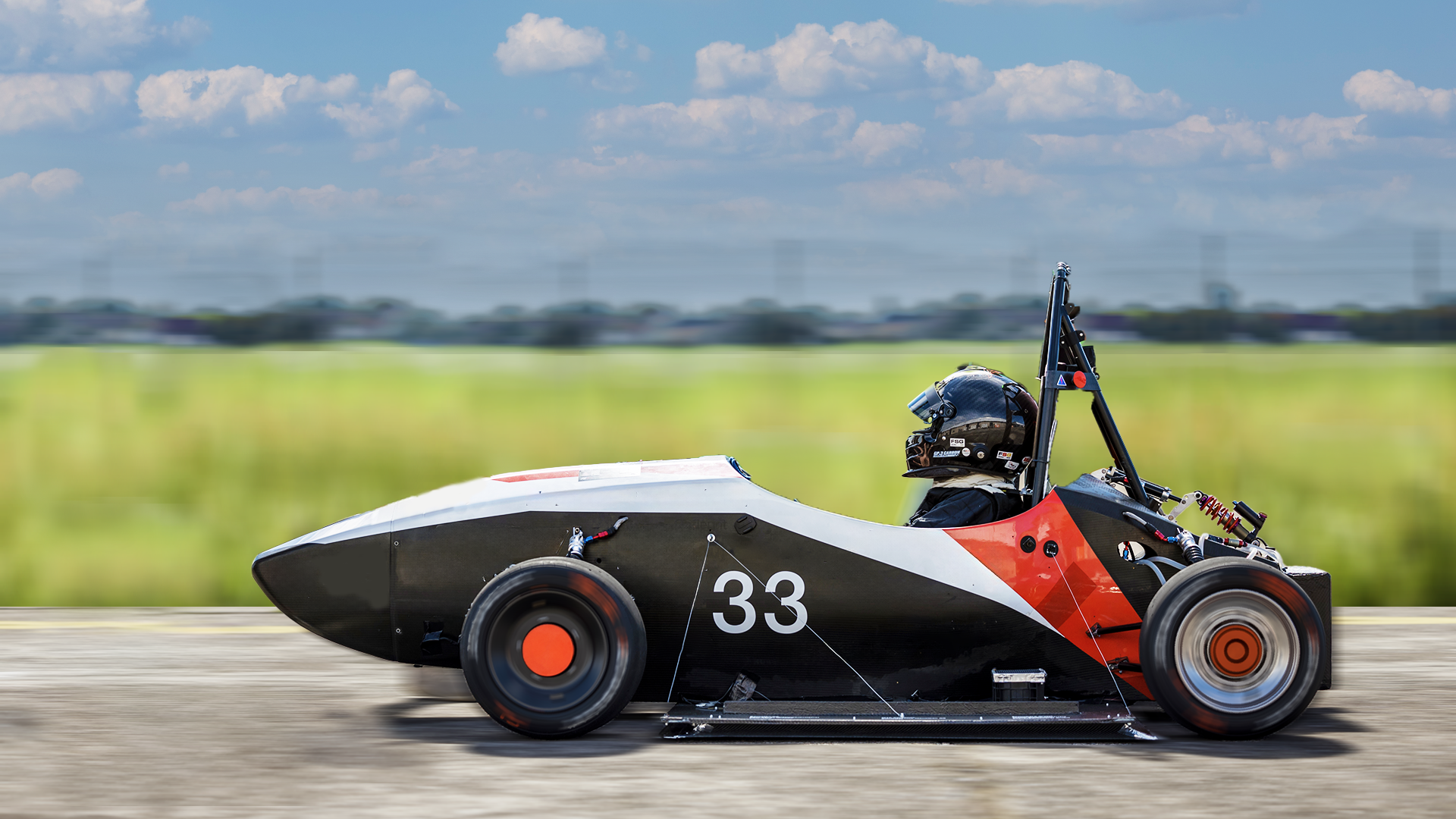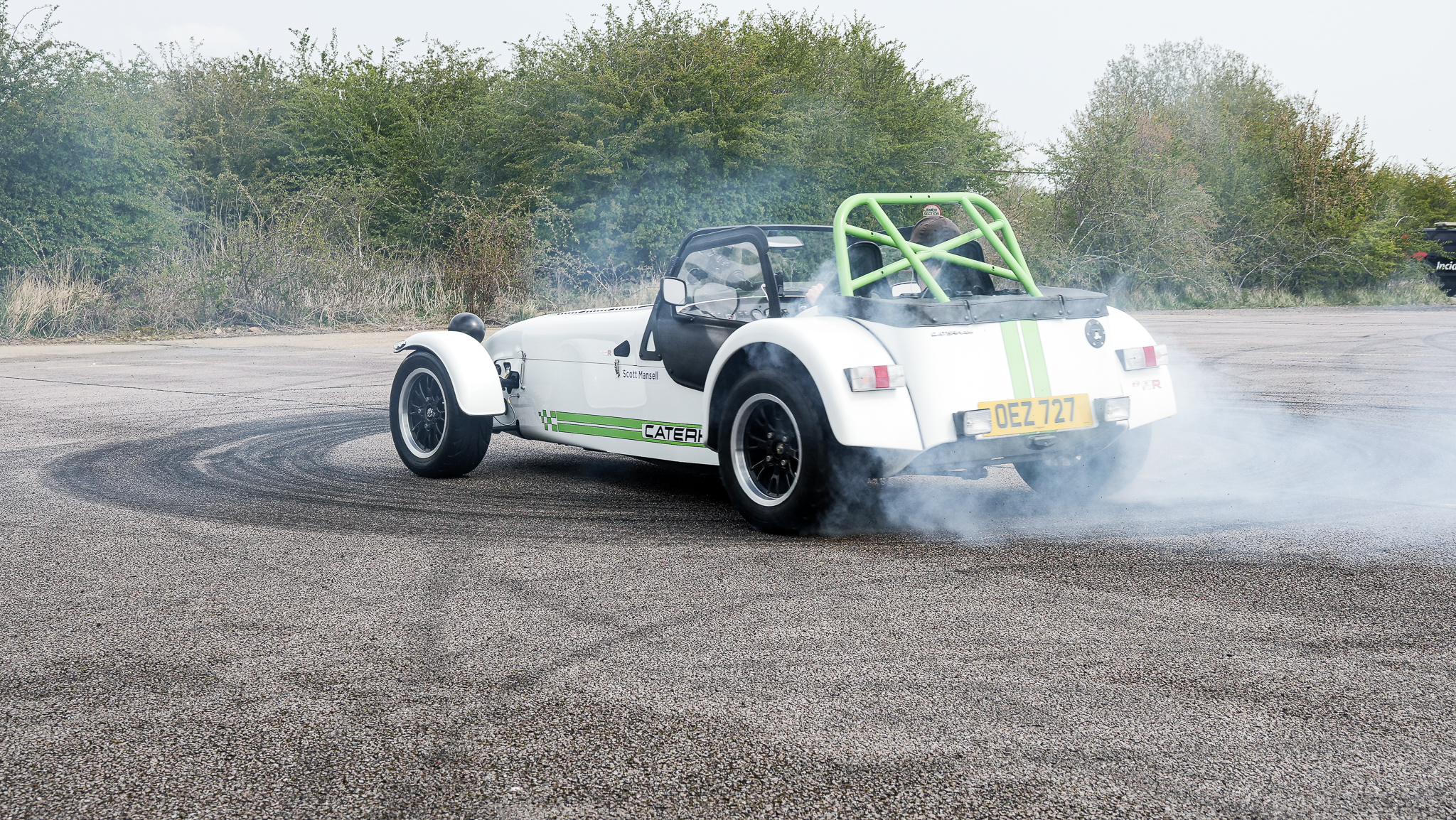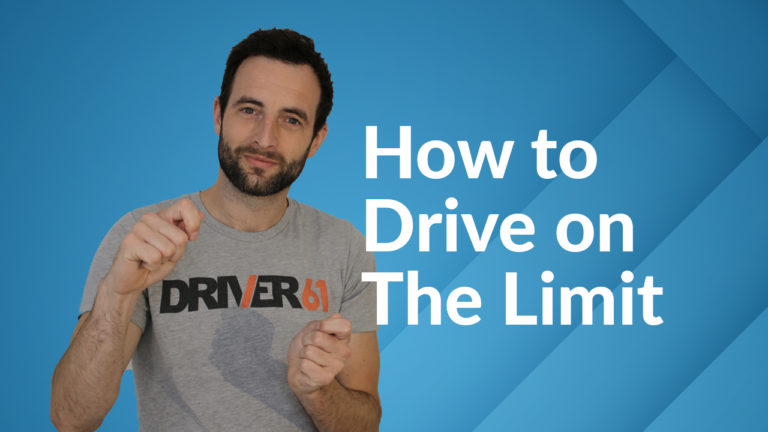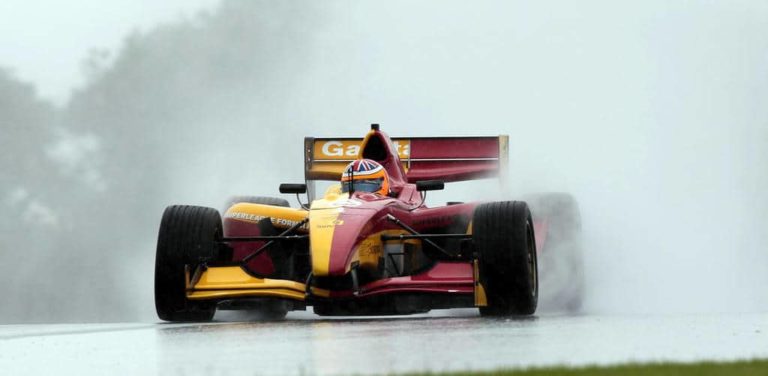How Improving your Vision on Track Improves Lap Times
Good vision is a fundamental technique to get right when driving on track.
Tutorial number three takes a look at how to improve your vision when driving, enabling you to be faster and more consistent on track.
In this tutorial we’ll take an in-depth look at:
- where you should be looking at each phase of the corner
- how good vision enables you to be faster and more consistent
- some common vision mistakes
- how to ensure you always have proper vision on track
Firstly, let me say that good vision doesn’t necessarily mean good eyesight, rather, it means absorbing as much information from the circuit as possible.
If you think about it, most of the inputs a driver puts into the car – whether it be braking, steering or acceleration – come from what they see on the track. Therefore, where you look on circuit is critical to being a fast and consistent driver.
Most drivers who are new to circuit and track day driving will have a short and narrow field of vision, meaning they are not looking far enough ahead, nor broadly enough around the circuit.
Limited vision hinders most aspects of driving on track, as corners will seem to arrive more quickly and the driver will not have sufficient time to make decisions about where to brake, turn-in, apex or re-engage the throttle.
A professional driver will look much further ahead of their actual position on the circuit and, therefore, have much more time to see what’s coming up and alter inputs accordingly.
Put simply; you need to be looking one stage ahead of your position on the circuit. For example, when braking or turning, you should be looking at the apex and when arriving at the apex, looking at the exit.
The diagram below shows a typical right-hand corner with a car at four different points on the track:
- Braking zone
- Turn-in point
- Apex (just before)
- Corner exit
1. Vision in the Braking Zone
In the braking zone, your vision should be focused at the apex of the corner. You could be hundreds of meters away from the corner, but you should be searching for the curbing on the inside or any apex reference you can find.
If your vision is at the apex, you know where you and you car are wanting to end up in a couple of seconds. This means that you’re best able to gauge at which point to brake, and later, how much speed to carry into the turn.
Even though your focus is at the apex, you should use your peripheral vision for any braking references you may have. I only advise using braking references for the longer braking areas, with two or more downshifts – otherwise you’ll want only to focus on the apex point. We’ll go over braking references and how to use them in a later tutorial.
2. Vision at the Turn-in Point
At the turn-in point, you’ll still want to be looking at the apex. When you’re about to turn, it’s important that you’re already looking in this area, otherwise, how do you know exactly when to turn and how much steering angle to use?
So many drivers only start to look at the apex as they begin to steer. This means they cannot consistently enter the corner at the correct speed and on the right line. It will inevitably cost them time and limit their lap time consistency.
As you should already be looking at the apex from the braking zone, the tightness of the turn shouldn’t take you by surprise and you should be able to judge entry speed and line perfectly.
From the turn-in point, you should be looking through the corner and visualising your line to the exit point.
On tighter corners, you will need to physically turn your head to be able to look far enough around the corner. As you can see in the image below (the chicane at Spa) the steering position is straight for the moment, but my vision is already looking across at the apex of the left turn.
3. Vision Just Before the Apex
As you’re coming into the apex, the car is turning, and you’re changing direction quickly. It’s the point at which you’re transitioning back onto the throttle pedal (click here for our 6 Phases of a Corner tutorial) and thinking about exiting the corner.
Therefore, it’s important that your vision has moved up the circuit to where you’re going to be in a couple of seconds: the exit point.
Knowing exactly where you’re aiming for ahead of time is going to give you plenty of opportunity to decide precisely when to reintroduce the throttle, how much to accelerate and where to steer the car.
4. Exiting the Corner
By the time you’re at point four on the diagram, the majority of the hard work is done. The car has turned, you’re back on the throttle, and the end of the corner is in sight (…and has been for a while).
If there’s another corner coming up in quick succession, ensure your vision is focused at its apex as you’ll need to be adjusting your line and changing speed appropriately.
If you have a straight following the corner it’s a good opportunity – really the only opportunity – to take a look in your mirrors and check your temperature gauges.
If you’re on a track day, make sure you check your mirrors for a faster car behind, pull to the appropriate side and let them through (check out our Definitive Guide to Track Days here). If you’re racing, check your mirrors to see if you’re vulnerable to being overtaken and if so, defend (a tutorial later in this series).
Extra Tips on Vision
I’ve repeated numerous times that your vision needs to be a stage ahead of where you currently are on the track, but what you also need to do is to visualise the racing line through the corner.
If you can imagine the line you want to be on in a couple of seconds, you will give yourself sufficient time to adjust and arrive correctly.
If you’re new to track driving or driving a quicker car than you’re used to, your vision will inevitably become shorter and narrower. I remember the first time I drove a Formula One car, the sheer pace of it made my vision come too close, the opposite to what I wanted. I think this is just a natural, survival instinct.
The trick is to become conscious of where you’re looking. With so many other things going on on the track when you’re lapping, it’s easy to reach mental capacity and become lazy with your vision. To rectify this, spend a couple of sessions constantly focused on looking further ahead and after some time, you should readjust to your new, improved vision.
Do this and you’ll give yourself so much more time to understand what you need to be doing with your car. You’ll see improvements in all aspects of your driving, from perfecting the racing line to becoming more consistent.
So that’s it for this tutorial, please let me know how you get on and as always if you have any questions or comments, please get in touch.

